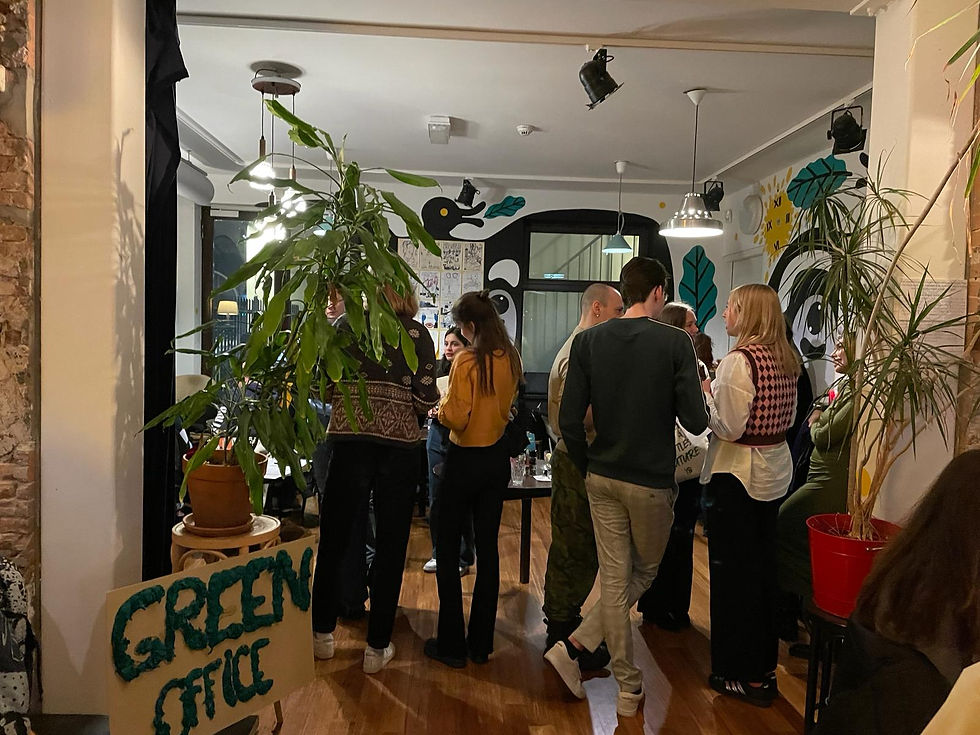MWG #2: Minimal Waste Guide
- Green Office

- Apr 7, 2019
- 3 min read

MWG 2 - Minimal Waste @Home - Coffee Edition
Last week we had some tips on how to come prepared to campus in order to study comfortably without creating any waste. Of course some of us prefer to study at home in peace. What most of us have in common is that need for caffeine to keep us going. There are many different ways to create the perfect cup of Joe, here are some that create the least waste possible. If you don’t know where to get unpackaged coffee beans, we’ve got you covered as well. And we’ve got some suggestions on what to do with the coffee grounds after you’re done enjoying your coffee.
Source low waste and environmentally friendly coffee beans
A good, low waste coffee starts with the bean, how it’s packaged and where it’s sourced. If you’re looking for places to buy unpackaged coffee beans, here are some tips for Amsterdam. Remember to bring your own container or a cloth bag.

Use a low waste coffee brewing method
#1 French Press
A French press is perhaps the least impactful of all brewing methods. All you need to do is add some coffee grounds and boiling water to the French press, allow it to sit for a couple of minutes, and then press the plunger down to separate the coffee grounds from your freshly brewed coffee – done! Enjoy your cup of plastic free coffee!

#2 Filter coffee
Filter coffee is a classic and you can make a whole pot from just one filter. Either use a drip coffee machine or a coffee pot and a porcelain or glass coffee filter. The filters to put the coffee in are usually made from biodegradable paper that can be composted, but there are also washable options that you can get.

#3 Espresso machine
If you enjoy espresso, a traditional espresso machine might be the way to go. Although more expensive and a bit more time consuming to maintain, the taste of freshly brewed, rich espresso is so worth it!

#4 Bialetti
Another, easier alternative to brew your espresso is by using a Bialetti, the traditional Italian method for making coffee at home. It’s a little stainless steel pot that you put on your stovetop and it makes great, fresh espresso!

#5 Reusable pod for capsule machine
Don’t throw out your Nespresso machine just yet. If you already own one, it might be worth getting a stainless steel reusable pod for it. Get them at Simon Lévelt
Reuse and compost the coffee grounds

Once you’re energized and ready to get back to studying, a great way to use coffee grounds before composting them is as a body scrub. The caffeine may help tighten your skin, stimulate blood flow and reduce the appearance of cellulite. All you need is a few simple ingredients. Here’s an easy recipe to try:
Pour 1 cup (112 g) of coffee grounds into a bowl (make sure they’re dry!). Add 1/4 cup (50 g) of brown sugar. Stir the two ingredients together with a spoon or fork. The sugar is there for exfoliation. The coarser the sugar is, the more exfoliating the scrub will be. Then melt 1/4 cup (52 g) of coconut oil and allow to cool to room temperature before stirring it into the coffee-sugar mixture. Do not add the coffee-sugar mixture into the oil while it is still hot, or it will dissolve. Coconut oil is very nourishing and moisturizing for your skin. If you can't find any or simply don't want to use it, you can try olive oil instead. Then use the scrub right away or store it in a glass jar to use later.
Ideally you’ll then add the coffee grounds directly to the soil in your garden as a plant fertilizer or compost them in a bin. If you don’t have a garden or compost system, could you give your coffee grounds to a friend or community garden instead?
Now, take your well-deserved break with a delicious, freshly brewed cup of zero waste coffee knowing that your actions will have a significant, positive impact on the environment!



